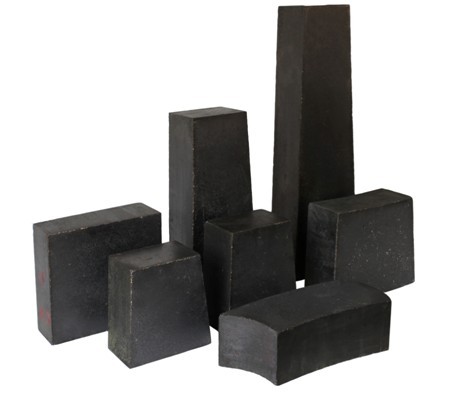
the development of magnesite carbon brick
The development of magnesite carbon bricks has been significant in the field of refractory materials. Magnesite carbon bricks are composite refractories made of magnesite (magnesium oxide, MgO) and carbonaceous materials. They are widely used in high-temperature applications, particularly in steelmaking and non-ferrous metal industries, due to their excellent thermal stability, corrosion resistance, and mechanical strength.
Here are some key trends and innovations in the development of magnesite carbon bricks:
Improved raw materials: Advances in raw materials have led to the development of high-purity magnesia and high-quality carbonaceous materials. High-purity magnesia ensures better refractoriness and corrosion resistance, while high-quality carbon materials contribute to enhanced thermal conductivity and mechanical properties of the bricks.
Optimization of matrix composition: The composition of magnesite carbon bricks has been optimized to achieve an optimal balance between magnesia and carbon. The proportion of carbonaceous materials is adjusted to improve the thermal shock resistance and erosion resistance of the bricks, while maintaining their overall performance.
Bonding agents and additives: The selection and application of bonding agents and additives play a crucial role in the development of magnesite carbon bricks. These additives can improve the sintering behavior, mechanical properties, and resistance to slag penetration and corrosion of the bricks. Examples of such additives include metallic binders, antioxidants, and anti-oxidation coatings.
Advanced manufacturing techniques: The use of advanced manufacturing techniques, such as high-pressure molding, vibration casting, and semi-dry pressing, has improved the density, homogeneity, and overall quality of magnesite carbon bricks. These techniques ensure better compaction and reduce the formation of defects, leading to improved performance.
Refractory lining design: The design of refractory linings, including the layout and arrangement of magnesite carbon bricks, has been optimized to maximize their performance and service life. This involves considering factors such as thermal expansion, erosion patterns, and temperature gradients within the lining.
Environmental considerations: With increasing focus on environmental sustainability, the development of environmentally friendly magnesite carbon bricks has gained attention. Efforts are being made to reduce the use of environmentally harmful additives and improve the recycling and disposal methods of used bricks, aiming to minimize the environmental impact associated with their production and usage.
It's important to note that ongoing research and development in the field of magnesite carbon bricks continue to drive innovation and improvements in their performance, durability, and sustainability.
More Refractory Material Products: www.gerisrefractory.com
Email: info@gerisrefractory.com
Grace